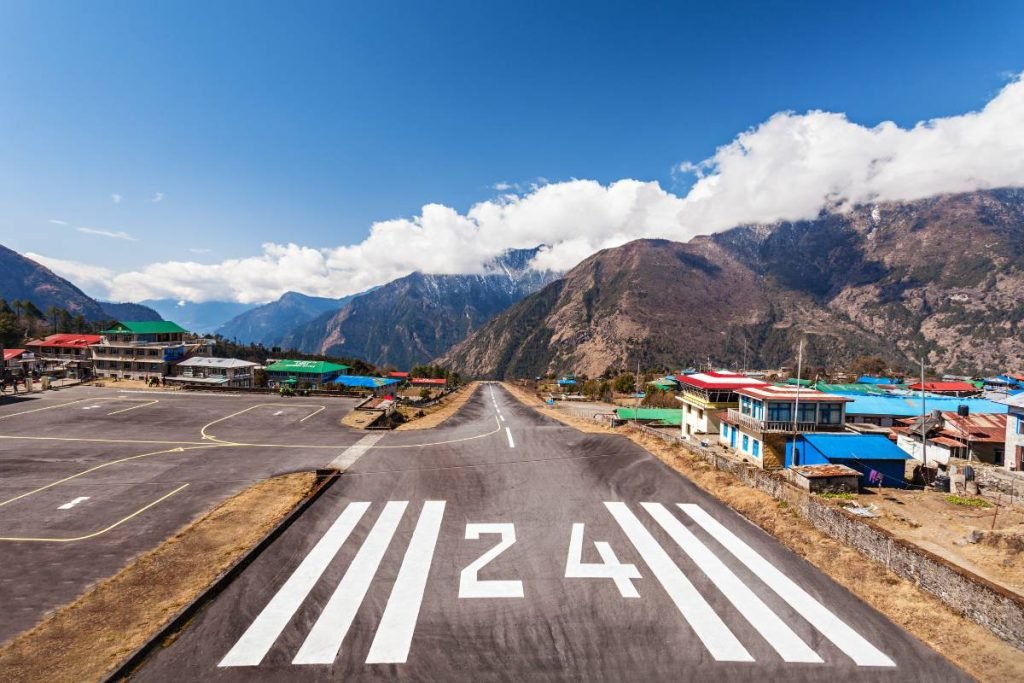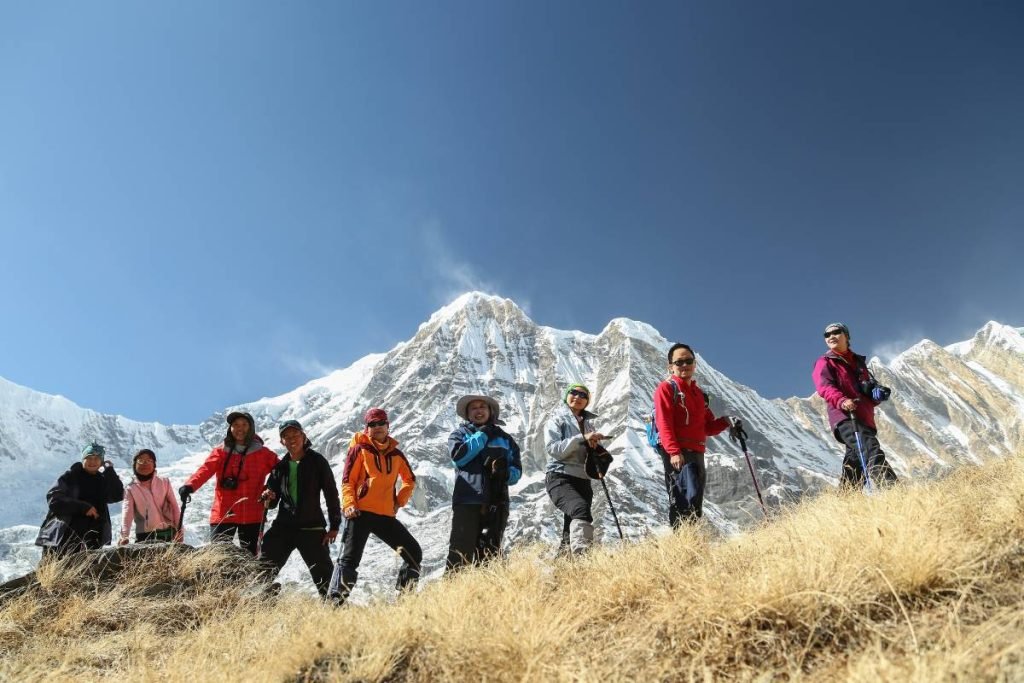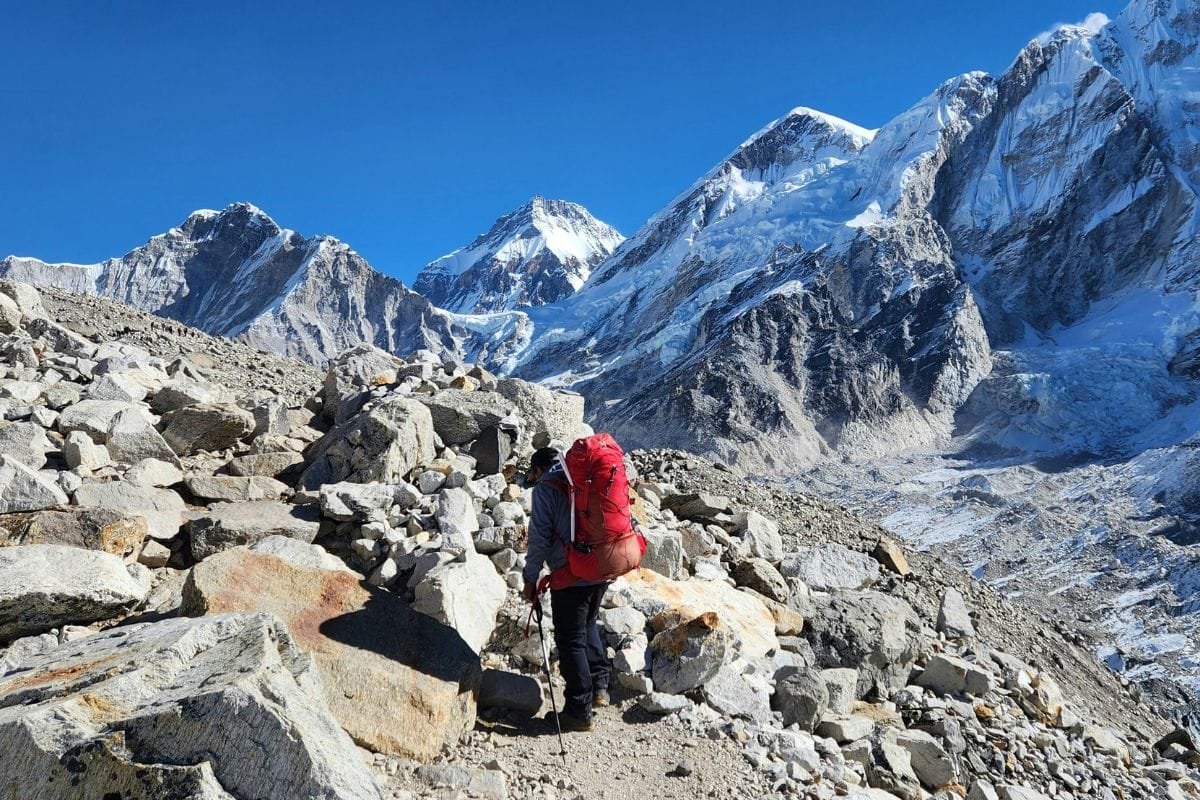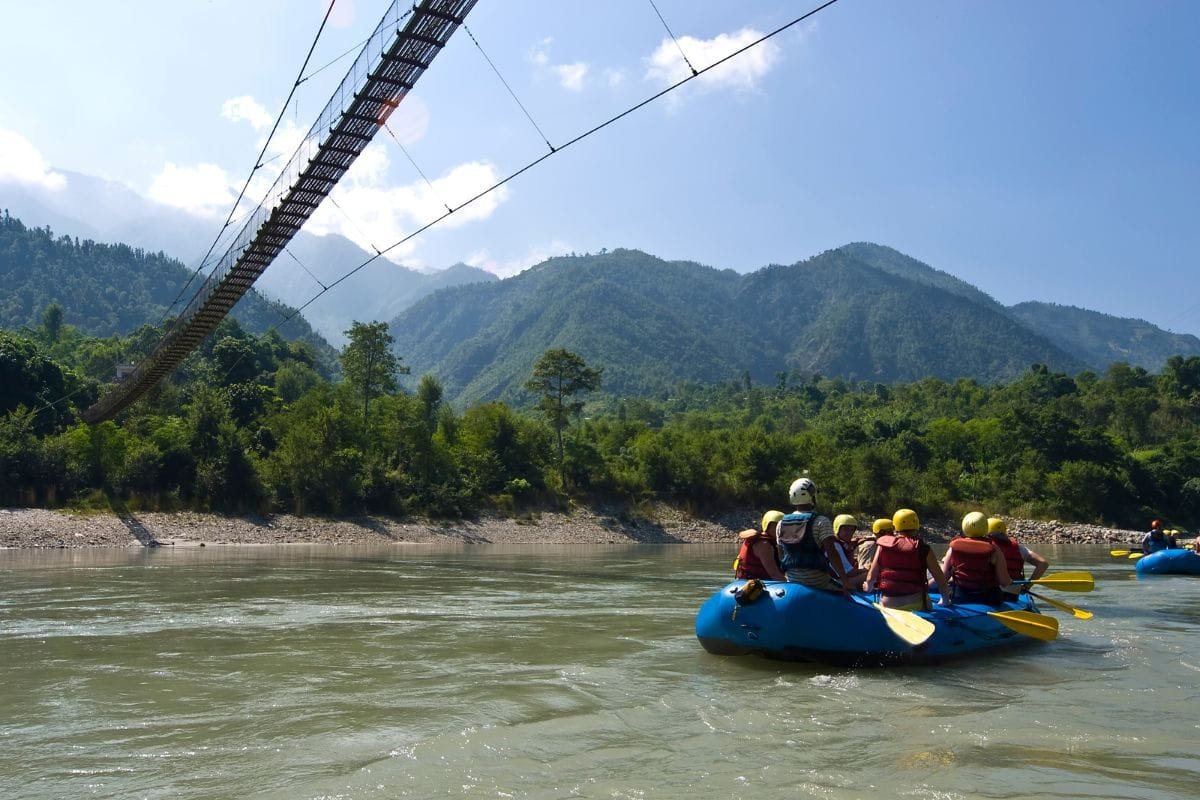
The Everest Base Camp (EBC) trek is a dream for adventurers from around the world. Walking through the towering peaks of the Himalayas, it offers a transformative experience that brings you closer to the world’s highest mountain, Mount Everest (8,848.86 meters). Located in the Khumbu region of Nepal, EBC sits at an altitude of 5,364 meters, offering adventurers the rare opportunity to stand in the shadow of Everest and experience the majestic beauty of the Himalayas firsthand. Whether you’re a seasoned trekker or an enthusiastic beginner, this journey takes you through remote valleys, ancient monasteries, and vibrant Sherpa villages, offering breathtaking views of some of the world’s most iconic mountains. Along the way, you’ll not only be rewarded with unparalleled panoramas of Everest, Lhotse, Nuptse, and Ama Dablam but also get a glimpse into the rich cultural heritage of the Khumbu region, home to the legendary Sherpa people.
Highlights of the Everest Base Camp Trek
- Maximum Altitude: 5,364 meters at Everest Base Camp, and 5,545 meters at Kala Patthar.
- Starting Point: Lukla, accessible by a short flight from Kathmandu.
- Best Time to Visit: Spring (March to May) and autumn (September to November).
- Trekking Duration: Around 12 to 14 days, including acclimatization stops.
- Difficulty Level: Challenging due to high altitude, but with proper preparation, it’s achievable for most trekkers.
Trekking Through the Heart of the Khumbu Region

The journey to Everest Base Camp begins with a thrilling flight into Lukla, one of the world’s most adventurous airports, perched on a mountainside. From here, the trek winds through picturesque valleys, dense forests of rhododendron and pine, and alongside the roaring Dudh Koshi River. The deeper you go into the Khumbu region, the more immersed you become in the stunning landscapes and the rich Sherpa culture that has thrived in these mountains for centuries.
The trail passes through bustling Sherpa towns such as Namche Bazaar, the unofficial capital of the Khumbu region. Namche is a vibrant town that acts as a hub for trekkers, climbers, and locals alike. It’s a great place to spend a day acclimatizing while exploring its local markets, bakeries, and museums. As the trail ascends higher, the vegetation thins, giving way to a more alpine landscape, where you’ll encounter yak caravans and Sherpa guides who have long made these mountains their home.
Beyond Namche, the trek leads to the peaceful village of Tengboche, famous for its beautiful monastery, Tengboche Monastery, where monks perform ancient Buddhist rituals daily. The spiritual ambiance of the monastery, set against a backdrop of Mount Ama Dablam, is a memorable stop on the way to Base Camp.
As you trek further up, the air becomes thinner, and the sense of adventure deepens. Villages like Dingboche and Lobuche mark the last human settlements before reaching Everest Base Camp. These villages offer a place to rest, acclimatize, and enjoy stunning views of Everest and other peaks before making the final push to Base Camp.
Reaching Everest Base Camp

The moment you step into Everest Base Camp is indescribable. Surrounded by towering ice cliffs and glaciers, the camp is a bustling area, especially during the spring climbing season. Although you won’t be climbing Everest itself, standing at the foot of the tallest mountain in the world is a feat in itself. The sprawling Khumbu Glacier lies at your feet, and the silence of the place is broken only by the occasional crack of shifting ice.
While reaching Base Camp is the pinnacle of the trek, many trekkers find the short hike up to Kala Patthar even more rewarding. At 5,545 meters, it offers the most iconic panoramic view of Mount Everest, along with stunning vistas of neighboring giants like Lhotse, Nuptse, and Pumori. The view from Kala Patthar is one of the most coveted sights for trekkers and photographers alike.
Culture and Traditions Along the Way

One of the most enriching aspects of the EBC trek is the chance to immerse yourself in Sherpa culture. The Sherpa people are renowned not only for their mountaineering skills but also for their deep-rooted spirituality and warm hospitality. Throughout your trek, you will pass prayer wheels, stupas, and colorful prayer flags fluttering in the wind—symbols of the region’s Tibetan Buddhist traditions.
Many villages offer the chance to visit monasteries, where you can observe Buddhist rituals and learn more about the spiritual life of the Sherpa. For the Sherpa, these mountains are sacred, and their connection to the land and the gods that inhabit the peaks is an important part of daily life. Trekkers are often invited to take part in ceremonies or simply enjoy the serenity of these religious centers.
Practical Information for the Trek

Physical Preparation: The Everest Base Camp trek is a physically demanding journey, so it’s important to prepare ahead of time. Cardiovascular endurance, leg strength, and stamina are key areas to focus on. Regular hiking with a weighted backpack, stair climbing, and aerobic exercises will help condition your body for the trek. It’s also crucial to practice walking on varied terrain to simulate the rugged paths of the Khumbu region.
Trekking Gear: Packing the right gear is essential for a successful trek. Layered clothing is key to staying comfortable in changing weather conditions. Start with moisture-wicking base layers, followed by insulating fleece or down jackets, and finish with waterproof outer layers. A sturdy pair of trekking boots is a must, along with trekking poles to support your knees during steep ascents and descents. Don’t forget to bring a warm sleeping bag, a good-quality daypack, sunscreen and sunglasses to protect your eyes from the intense UV rays at high altitudes.
Accommodation and Meals: The Everest Base Camp trek is supported by a network of teahouses that provide basic accommodation and meals along the way. Rooms are simple but comfortable, typically with twin beds, and most teahouses have communal dining areas where trekkers can warm up by the fire. Meals usually consist of hearty Nepali staples like dal bhat (rice and lentils), soups, noodles, and Tibetan bread. Although the options are limited, the meals are filling and provide the energy needed for long trekking days.
Dealing with Altitude: Trekking to high altitudes comes with the risk of altitude sickness, also known as Acute Mountain Sickness (AMS). Symptoms include headaches, nausea, dizziness, and shortness of breath. The best way to avoid AMS is to ascend slowly and allow your body time to acclimatize. Hydration is key—drink plenty of water, and avoid alcohol. Most trekkers spend a few rest days at key points like Namche Bazaar and Dingboche to give their bodies time to adjust to the thinning air.
Additional Tips
Eco-Responsibility: The Everest region is a fragile ecosystem, so trekkers should minimize waste, use refillable water bottles, and respect the “Leave No Trace” principles.
Training: It’s essential to prepare physically with cardio, strength training, and stamina-building exercises in the months leading up to the trek.
Immersing in the Experience

The Everest Base Camp trek is not just about reaching a destination—it’s about embracing the entire journey. Every step brings you closer to nature, every conversation with a Sherpa guide or fellow trekker opens up a new perspective, and every mountain pass conquered fills you with a sense of achievement. It’s a test of endurance, strength, and willpower, but the rewards are more than worth it.
From the prayer flags fluttering against a backdrop of snow-capped peaks to the peaceful hum of Buddhist chants in remote monasteries, the Everest Base Camp trek is an adventure that touches both the body and soul. For anyone seeking the thrill of trekking in the world’s most iconic mountains, this journey promises memories that will last a lifetime.
Let FroxHolidays be your trusted guide to this once-in-a-lifetime adventure—where the journey is as transformative as the destination itself.


